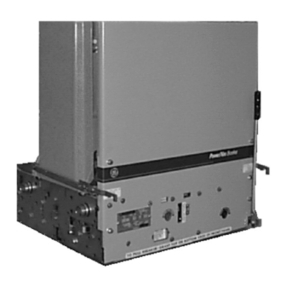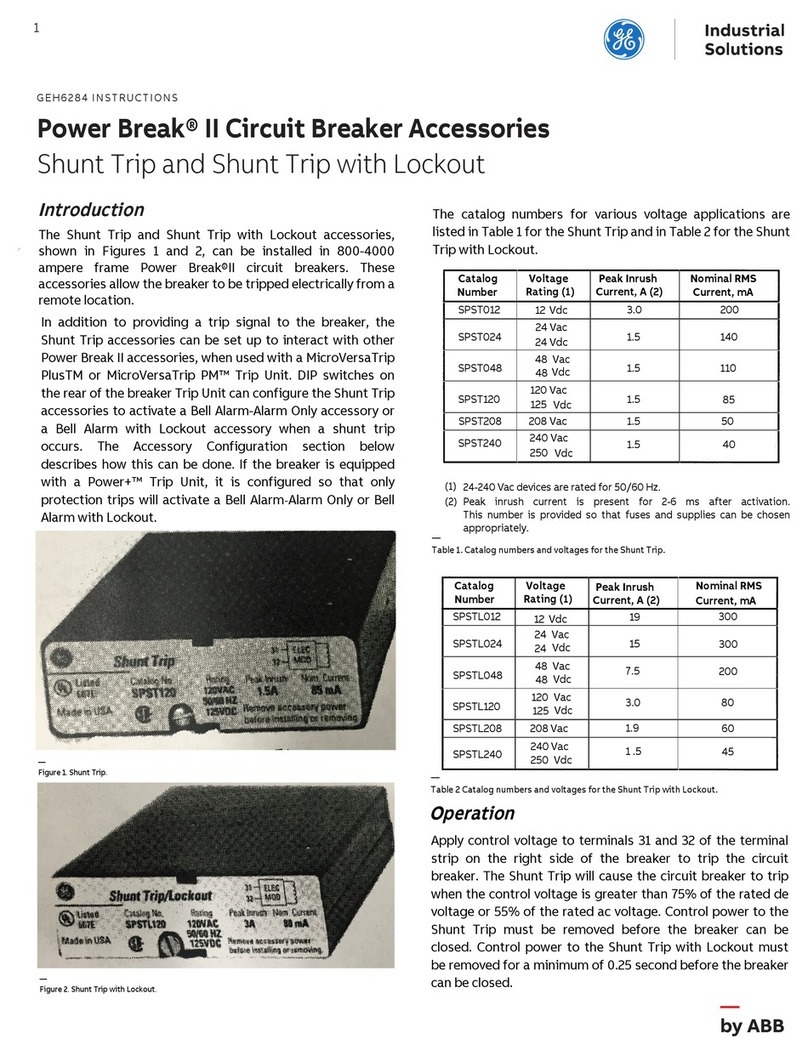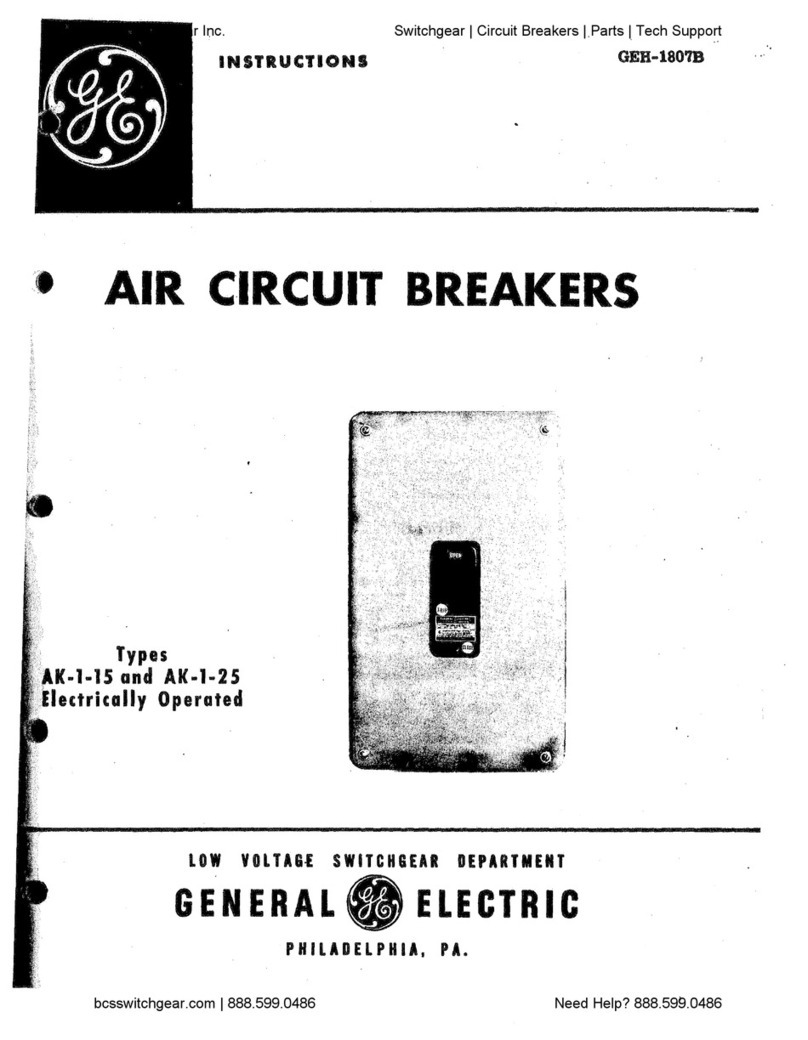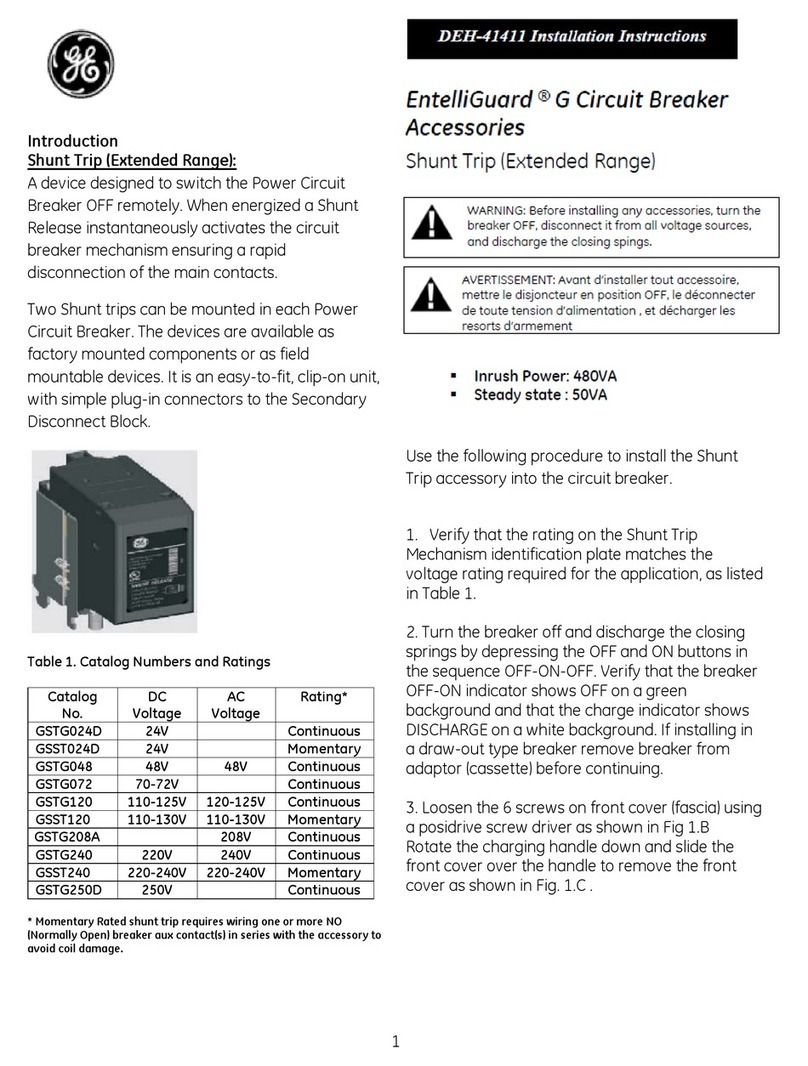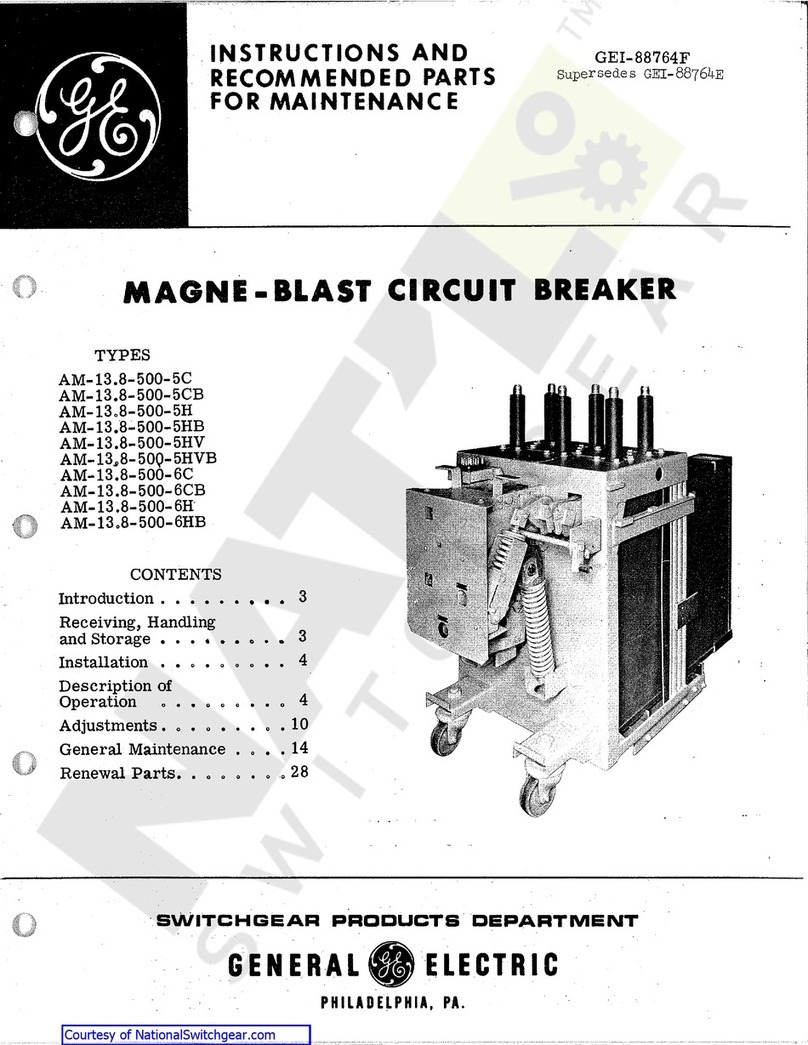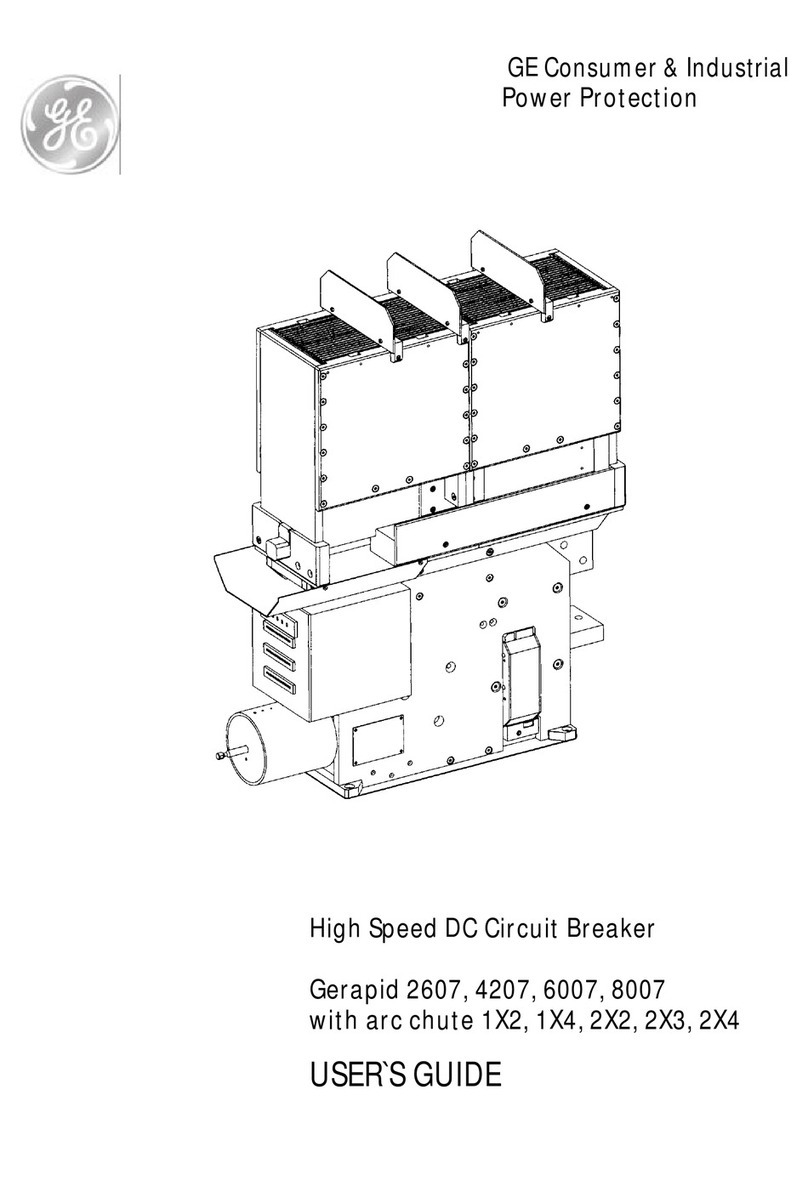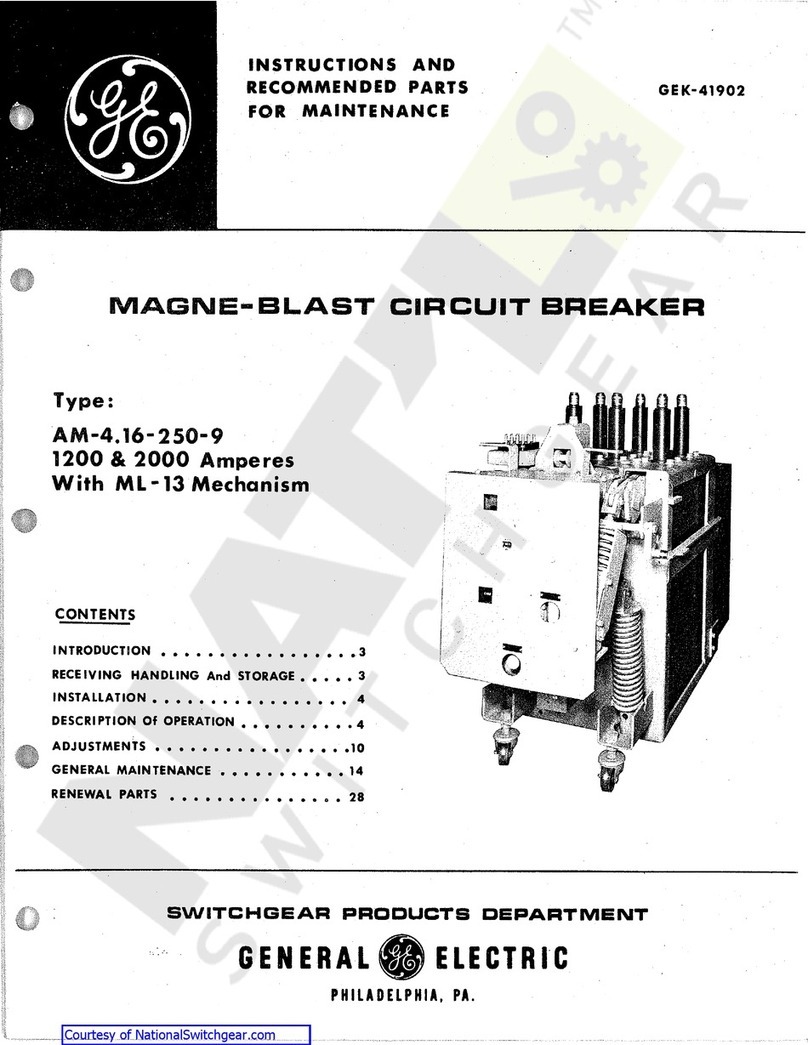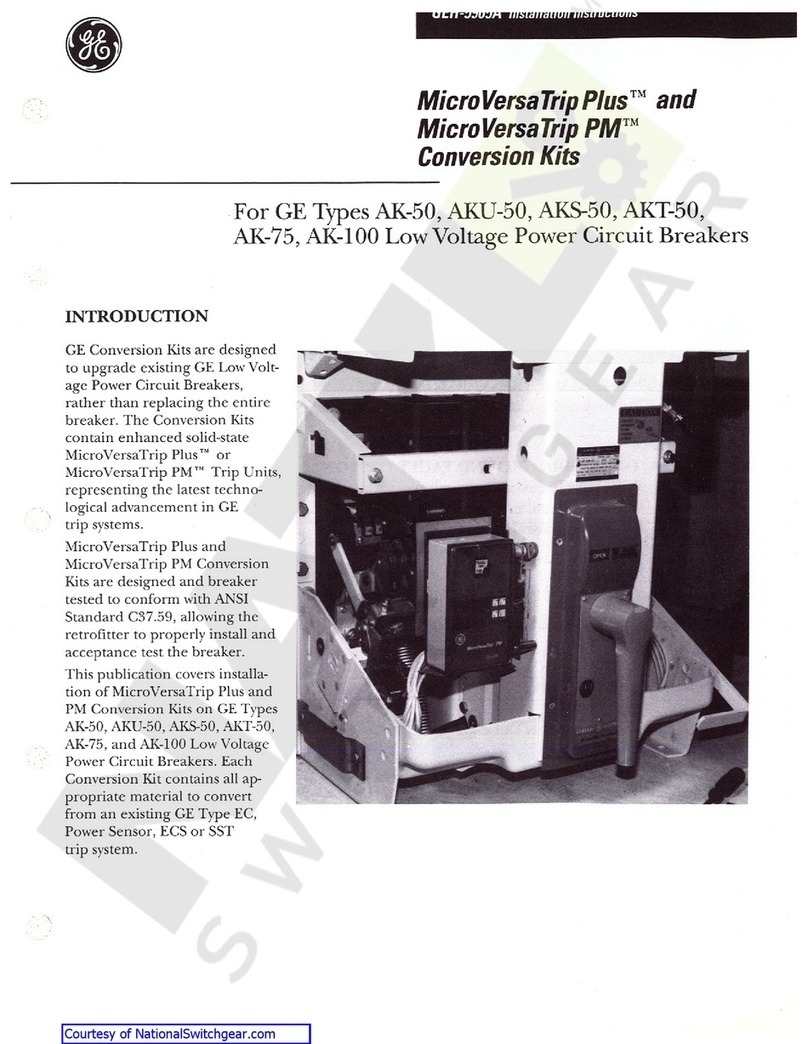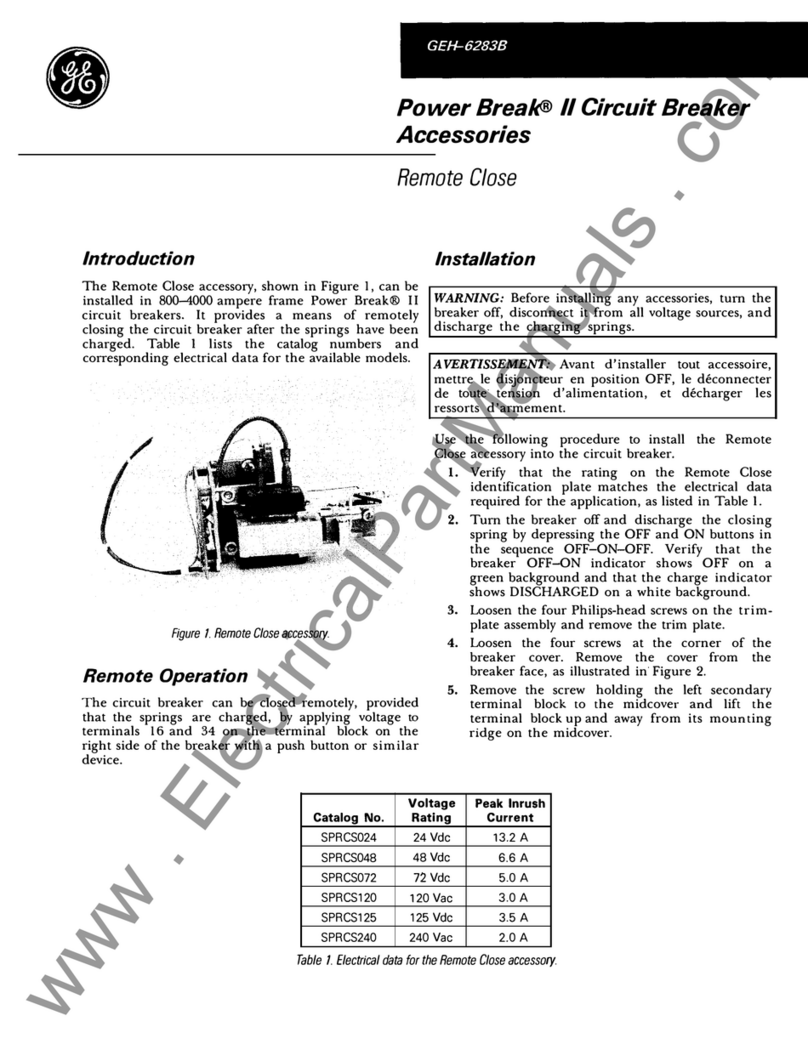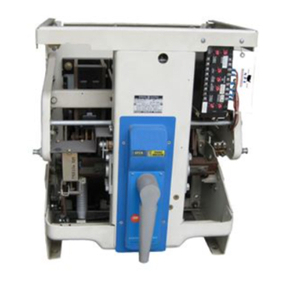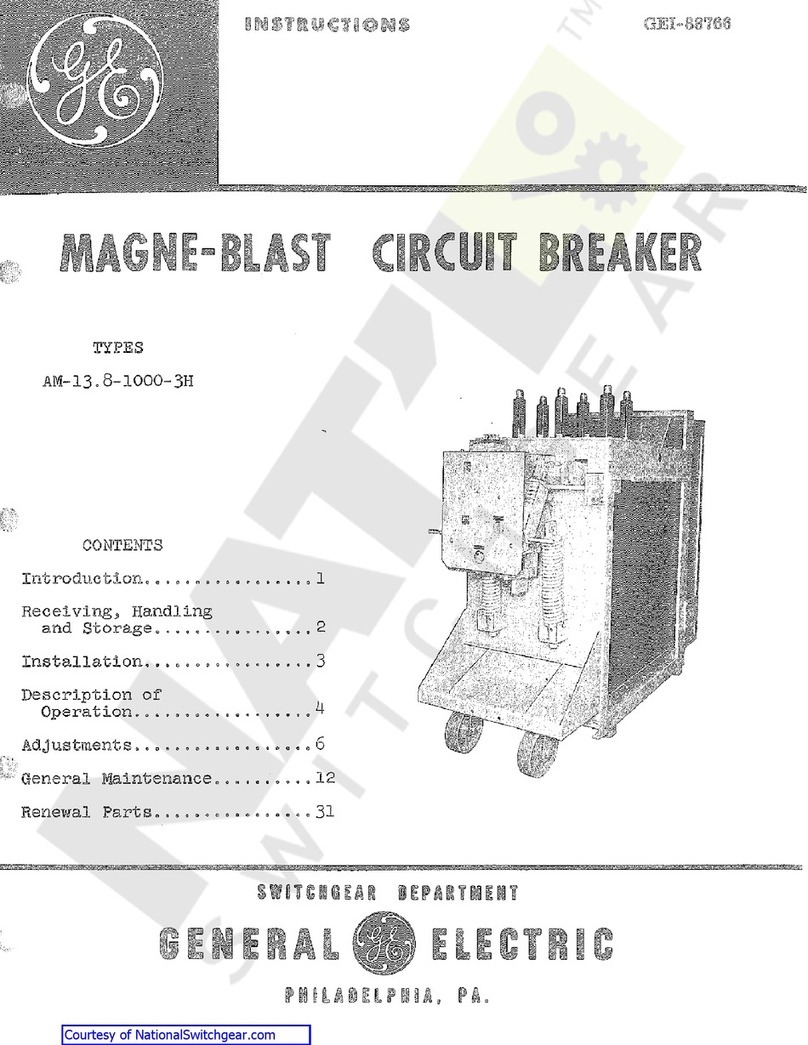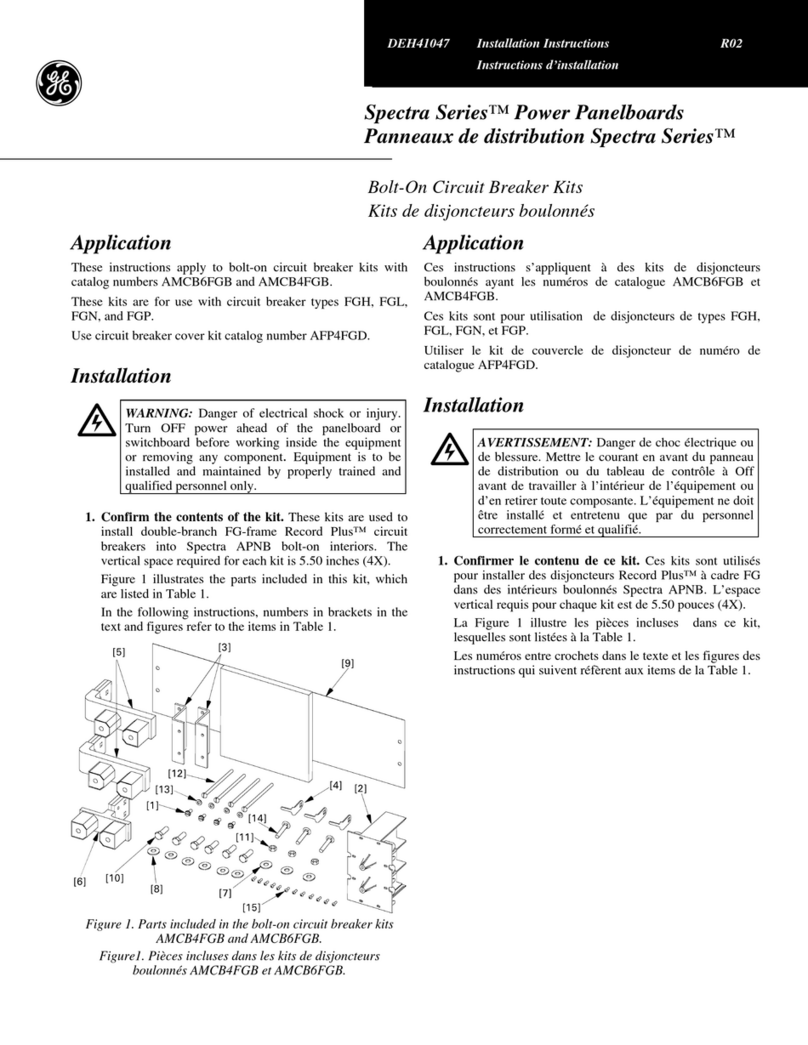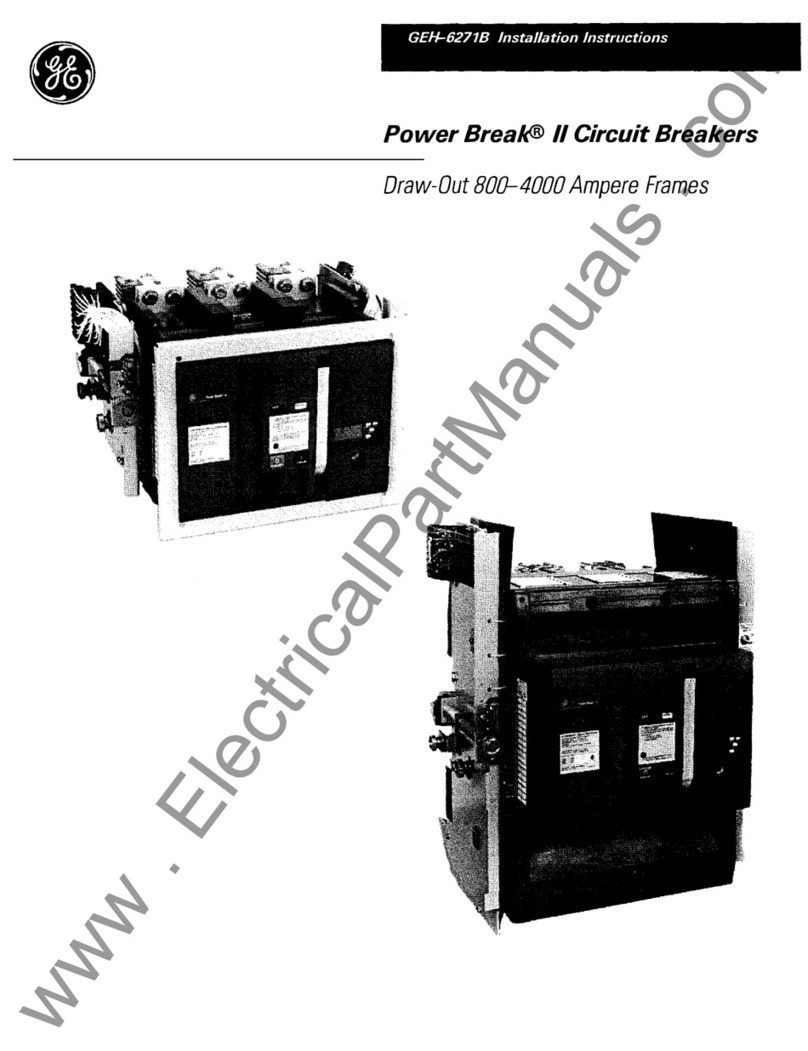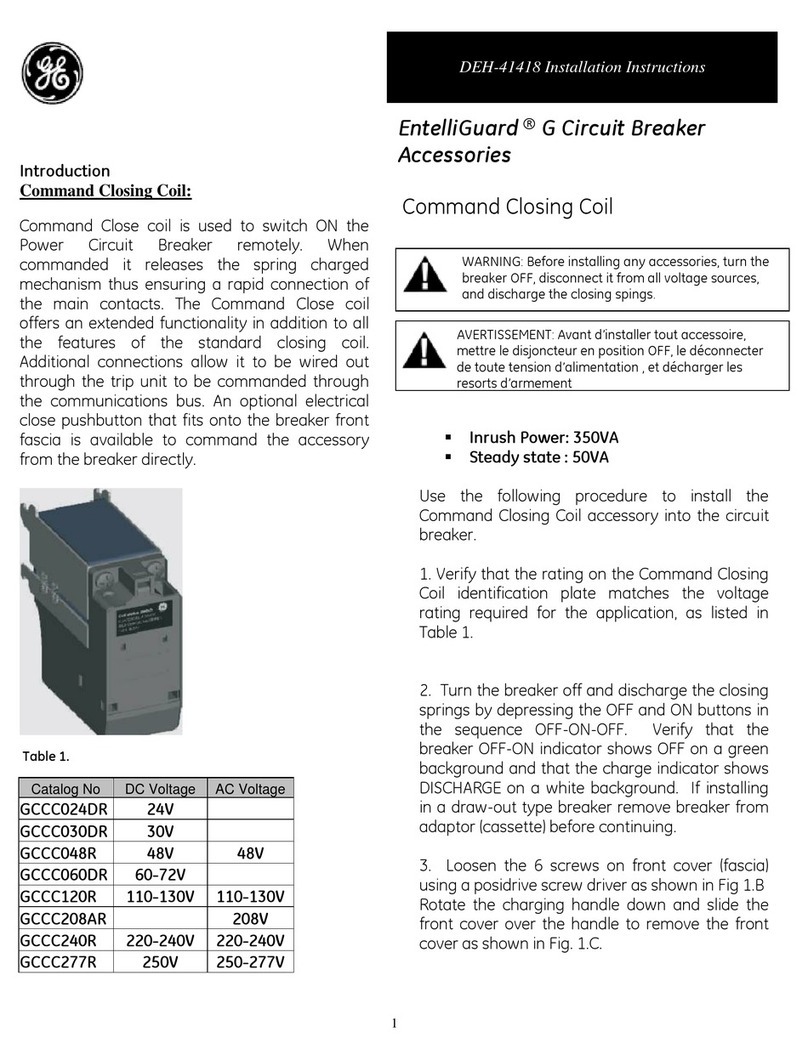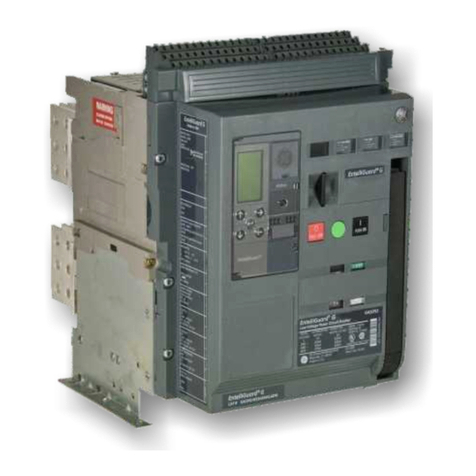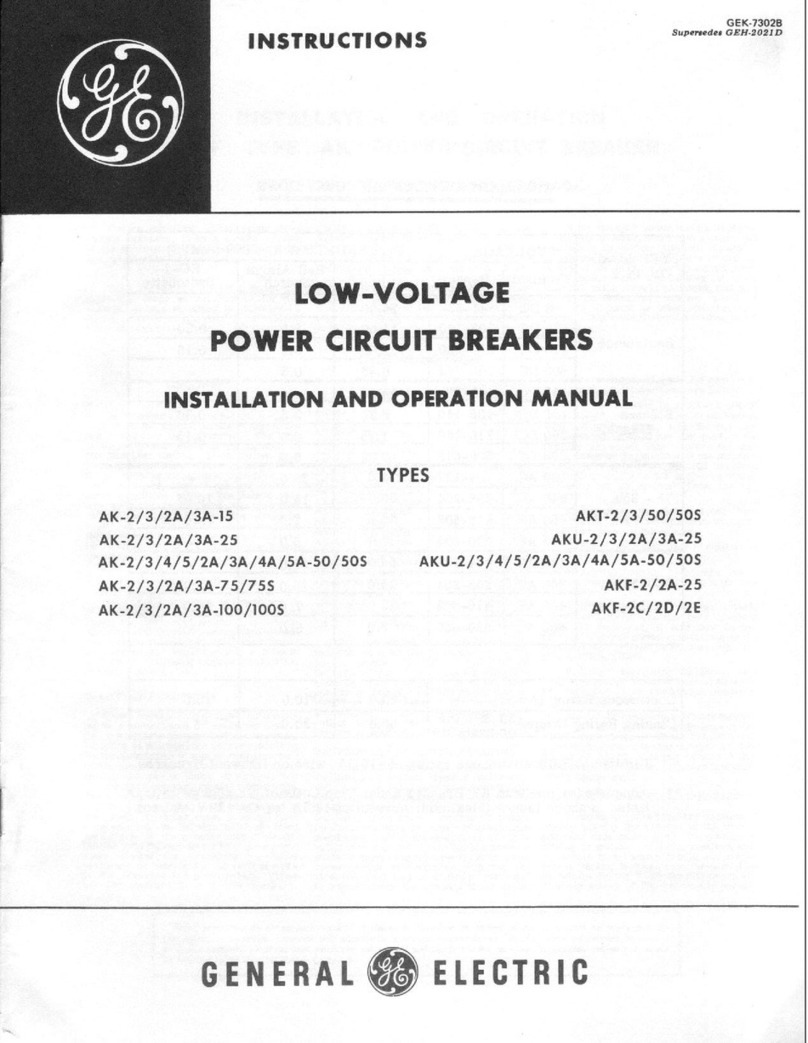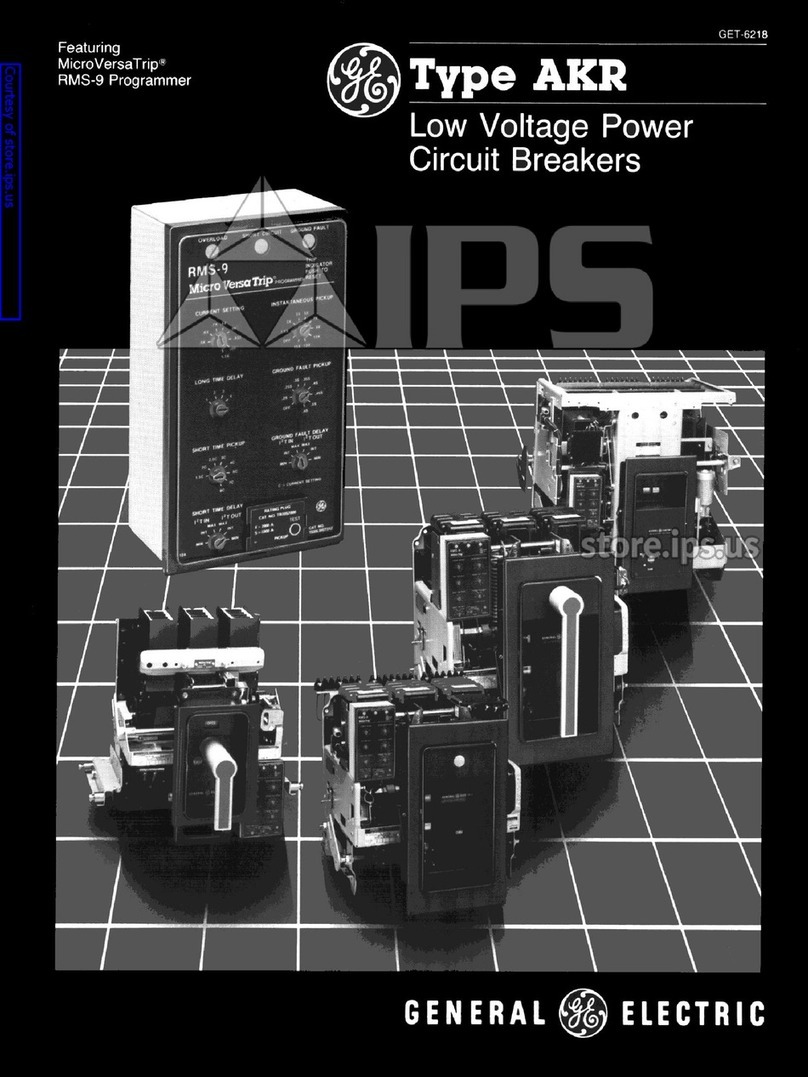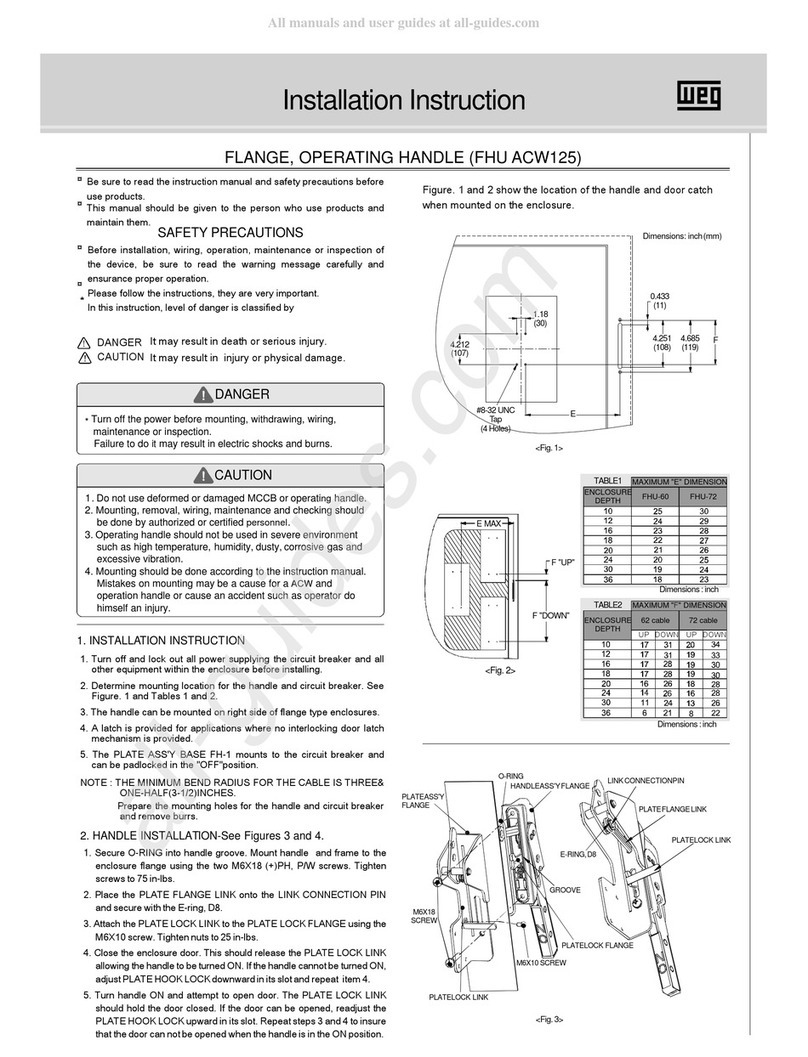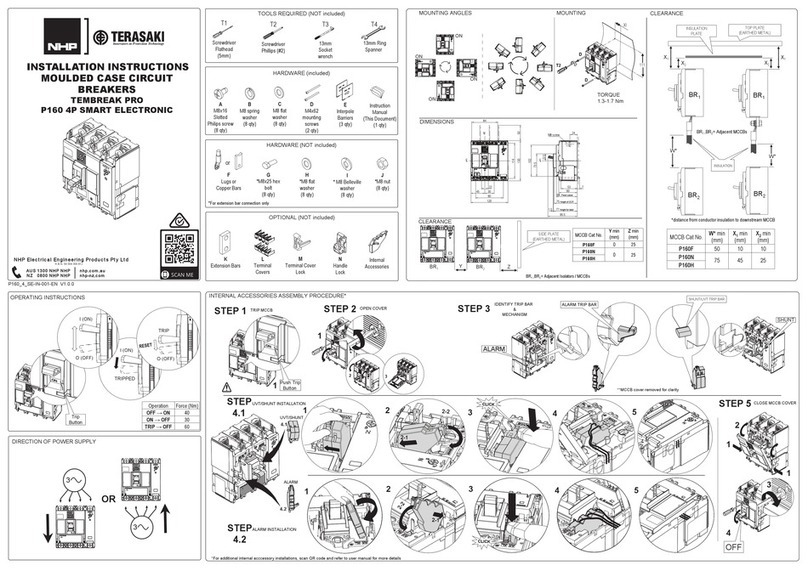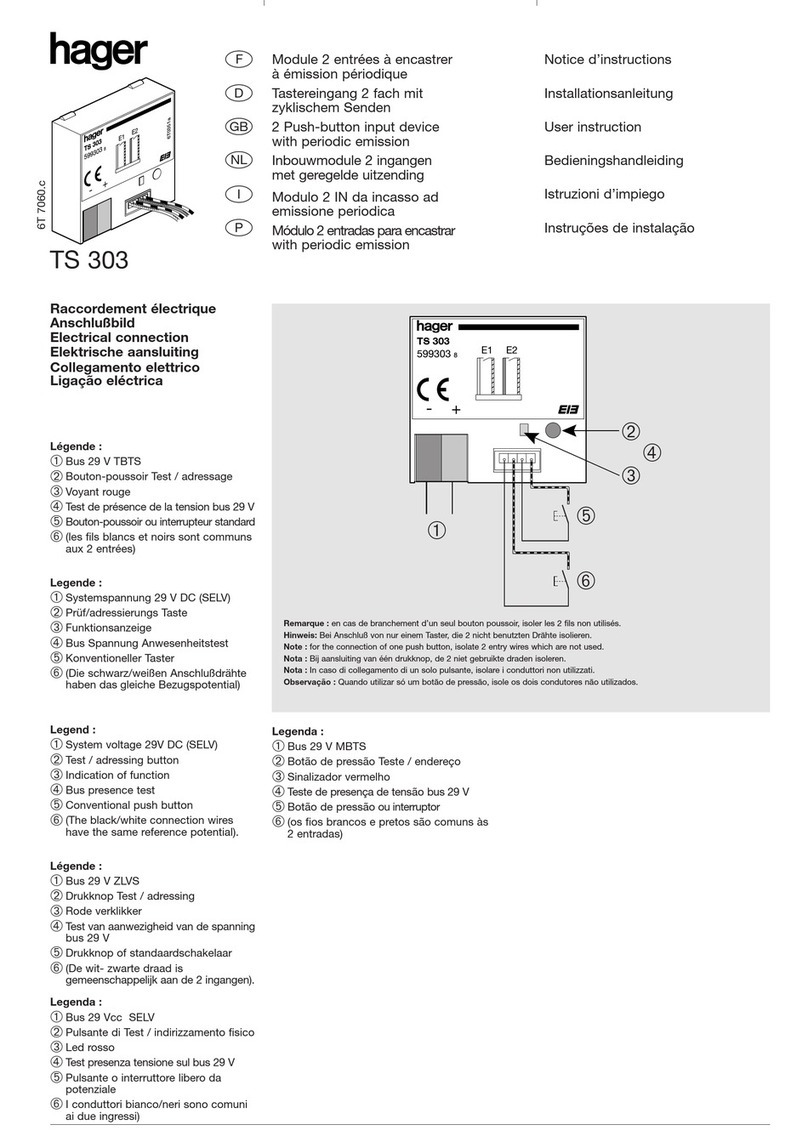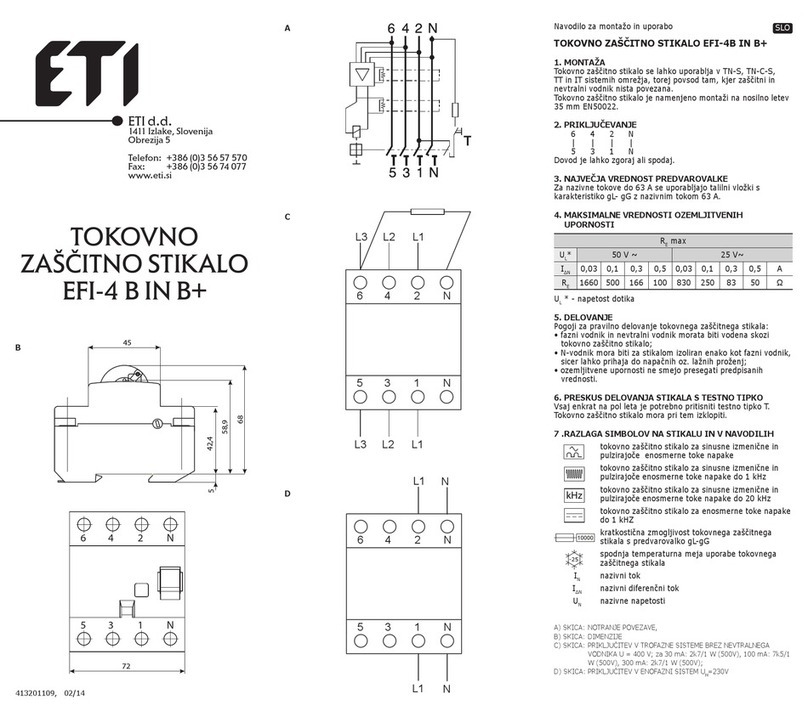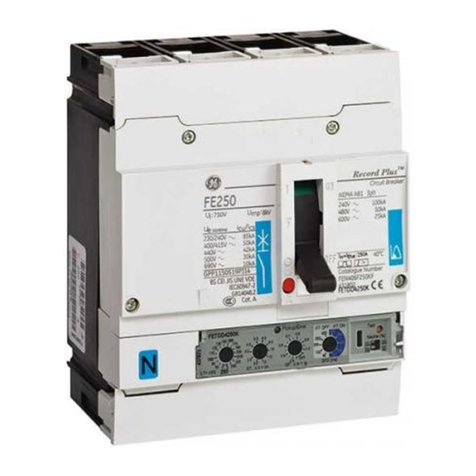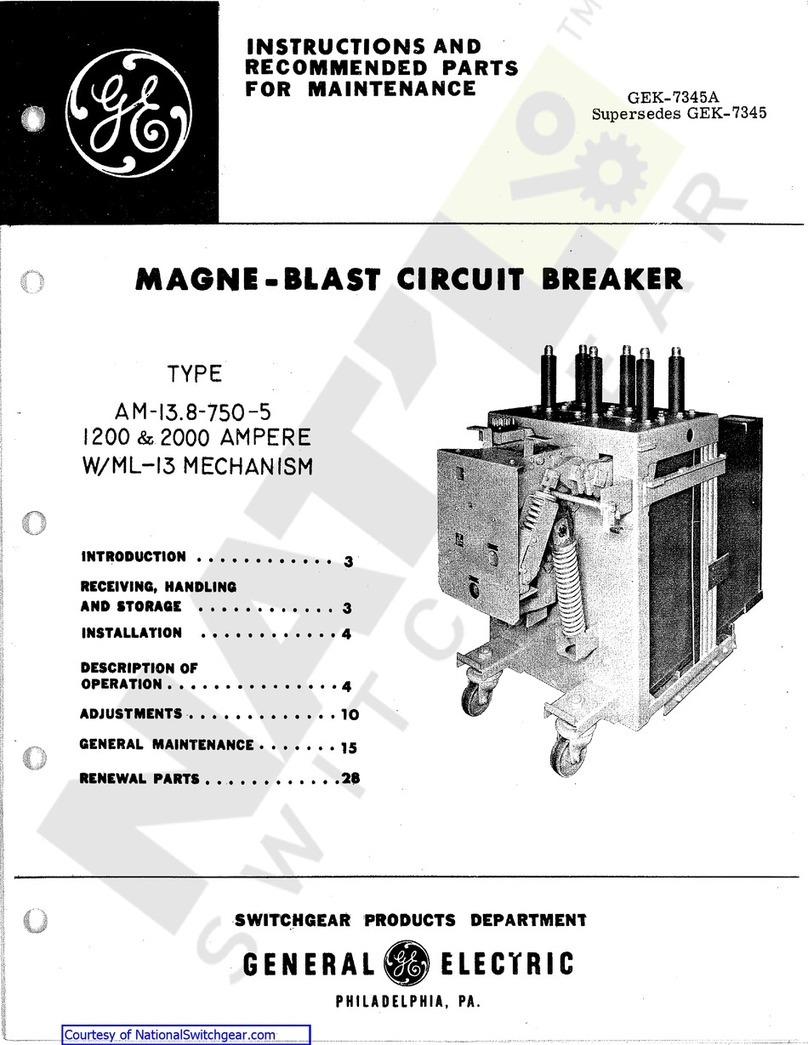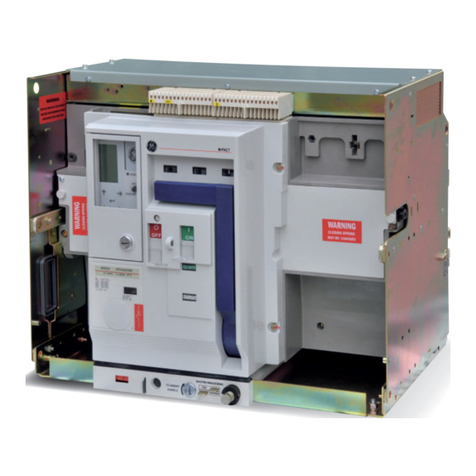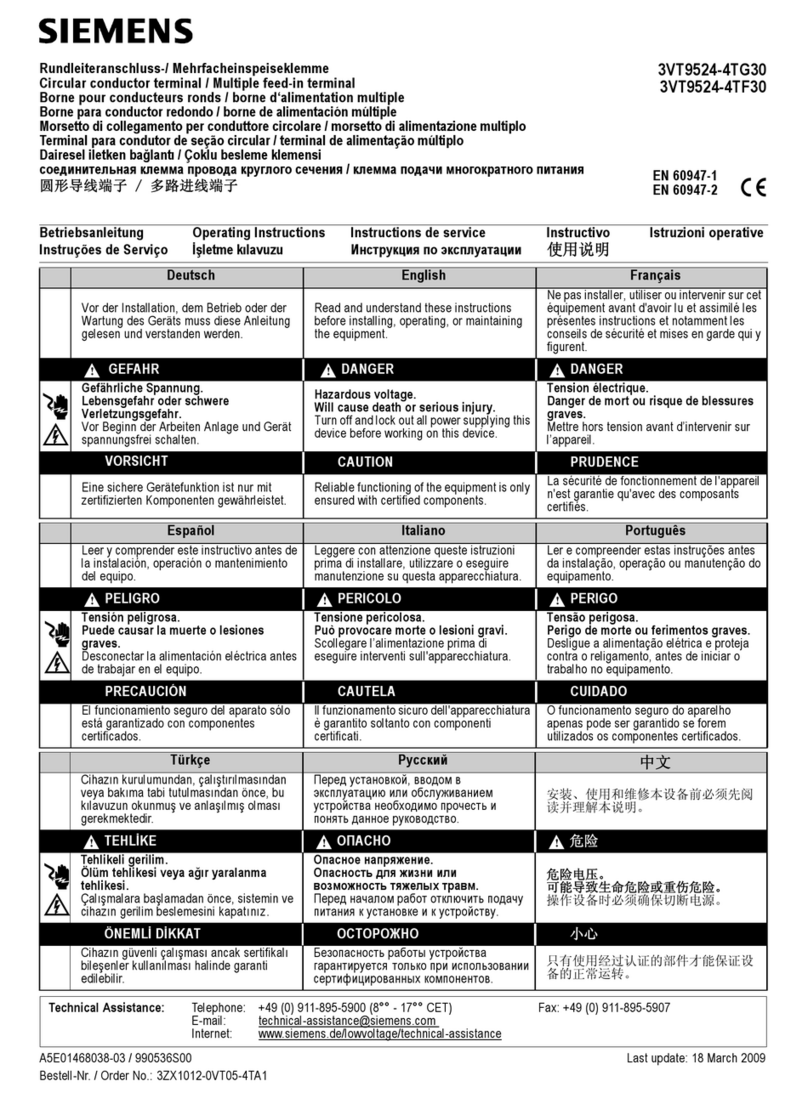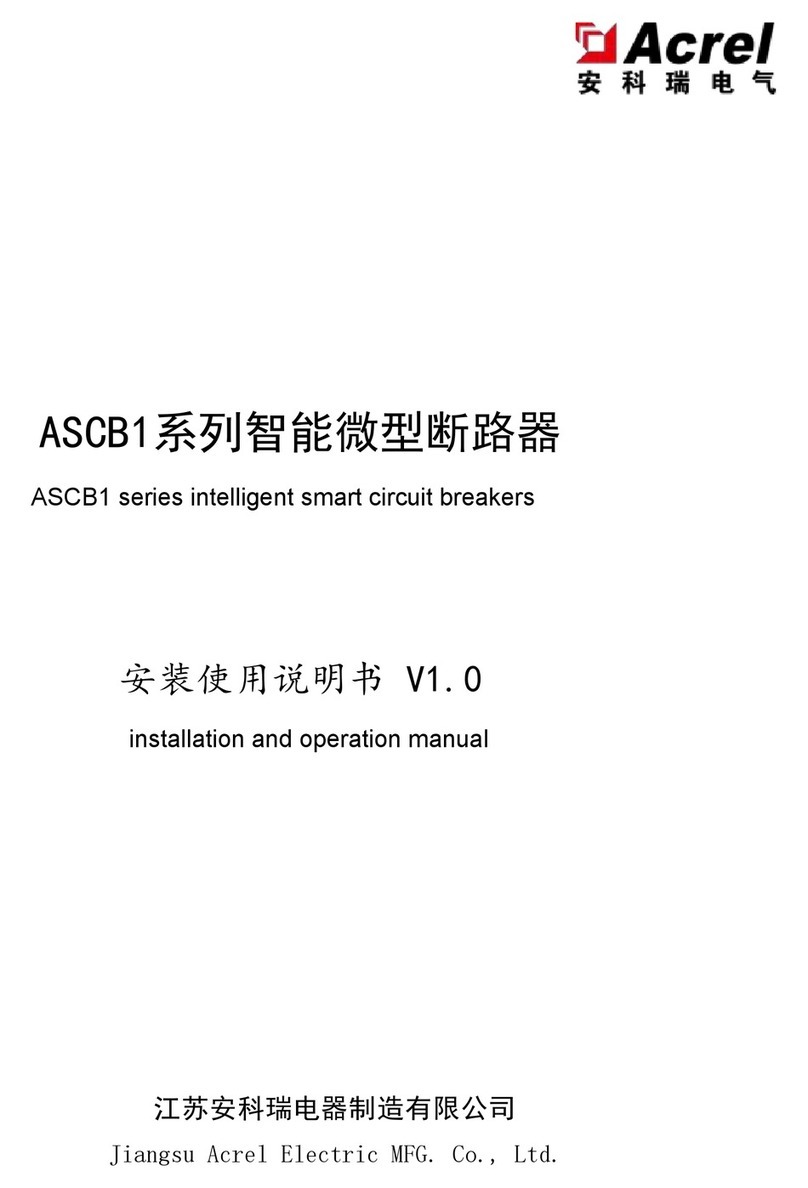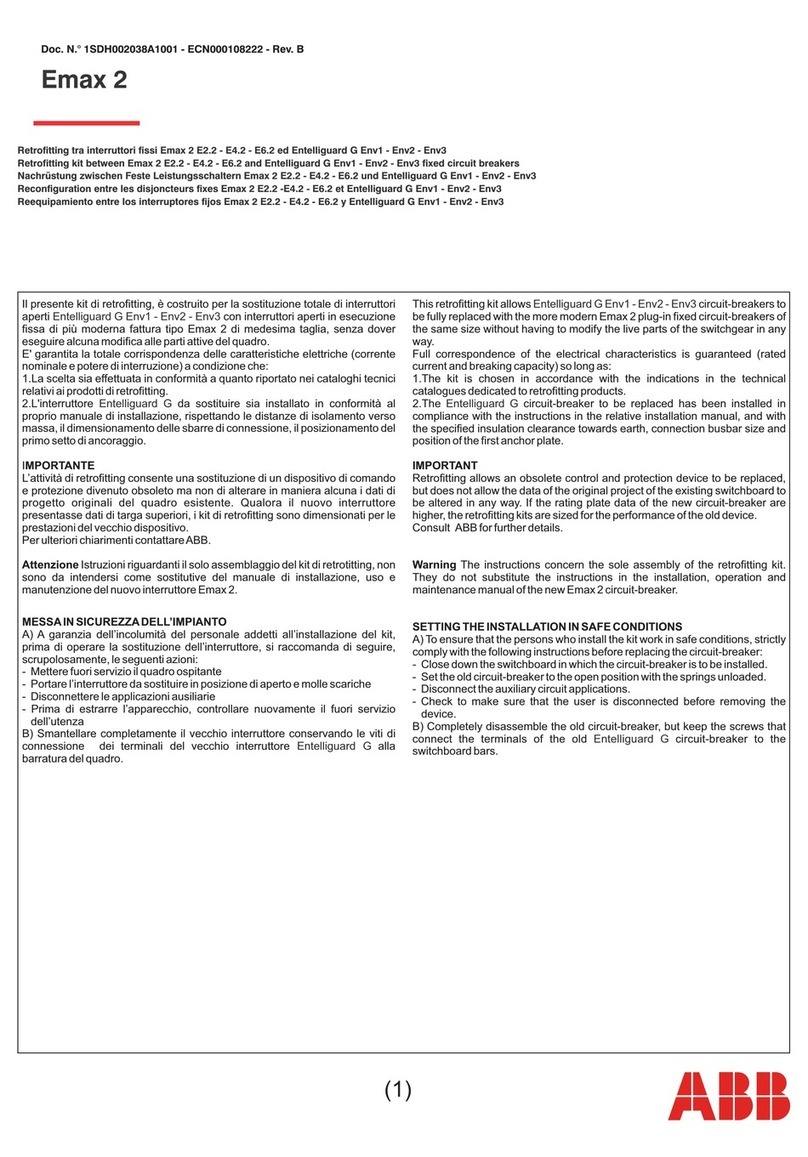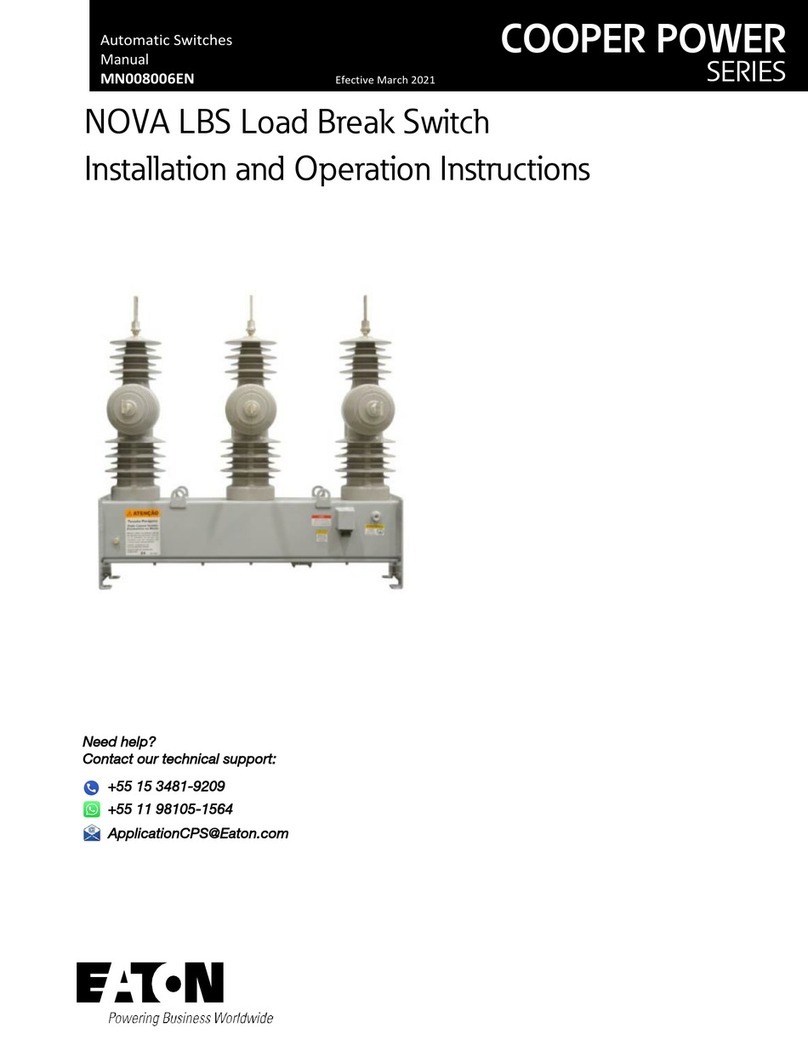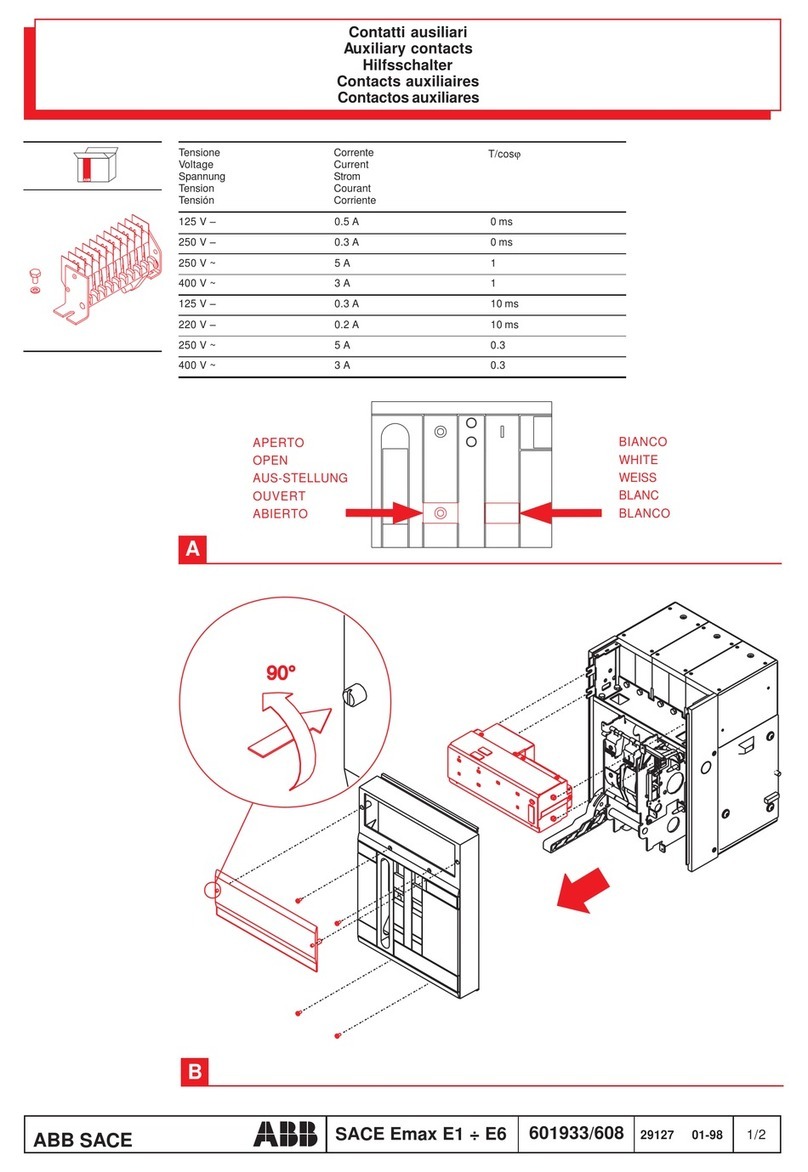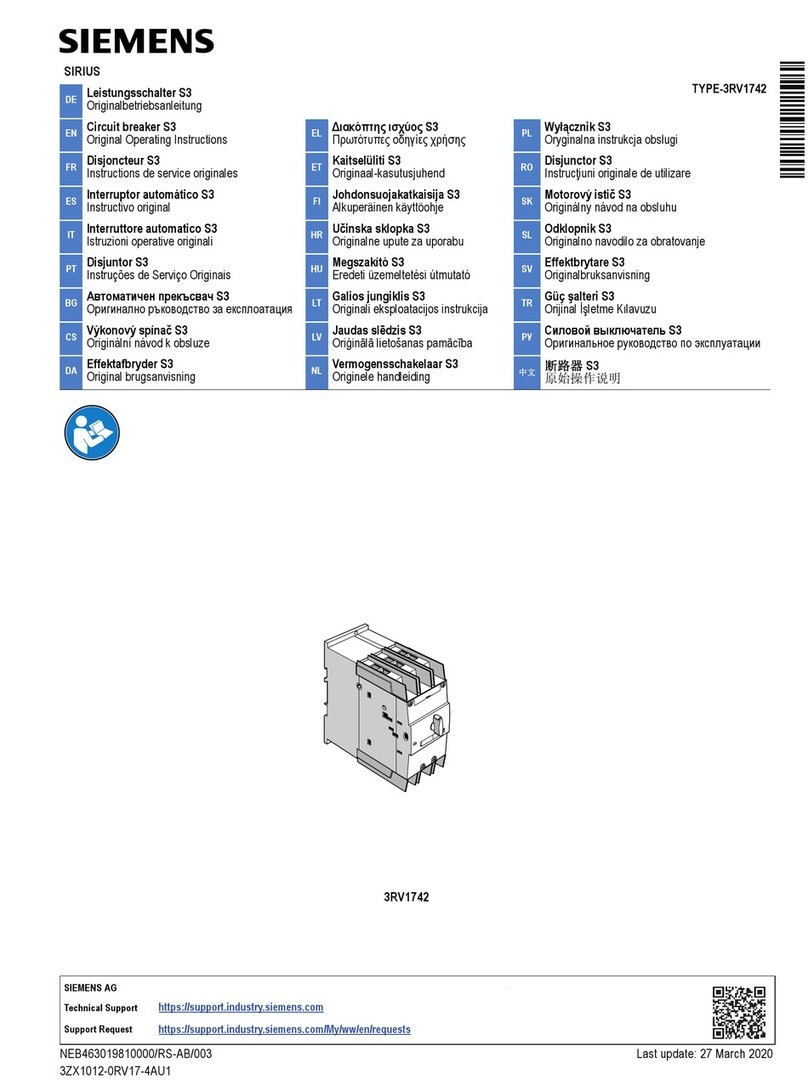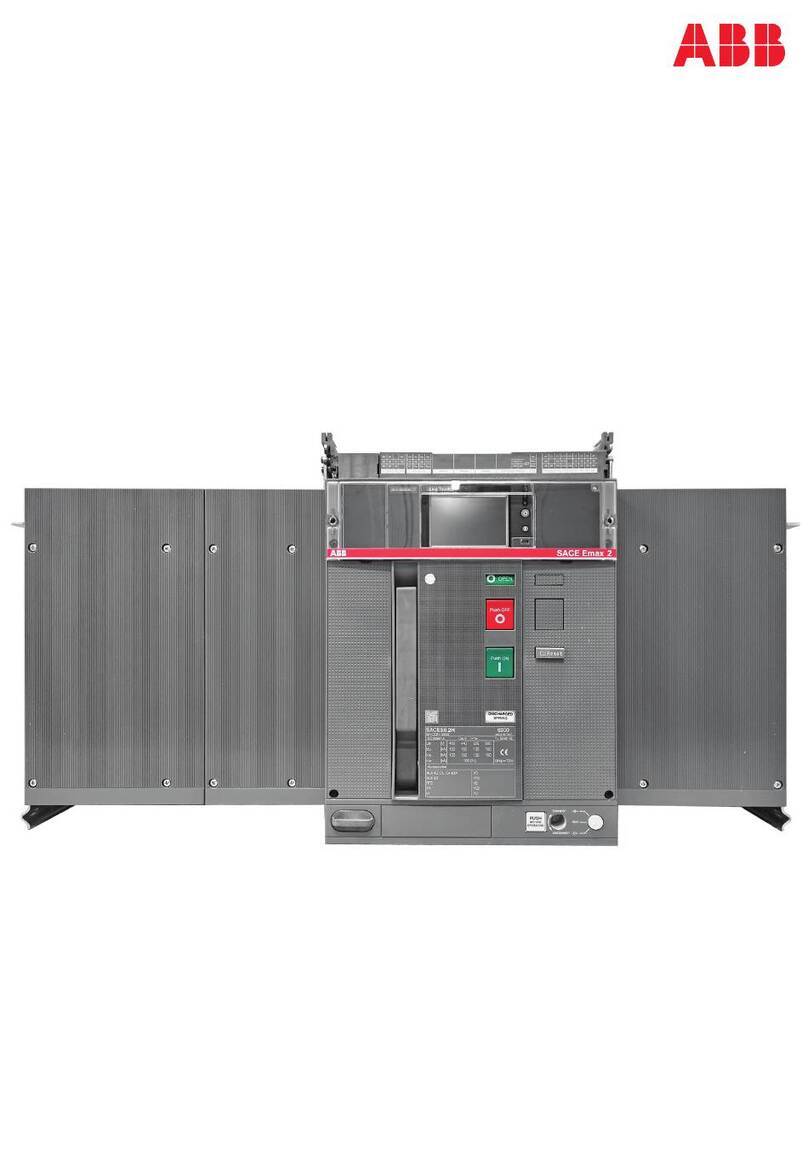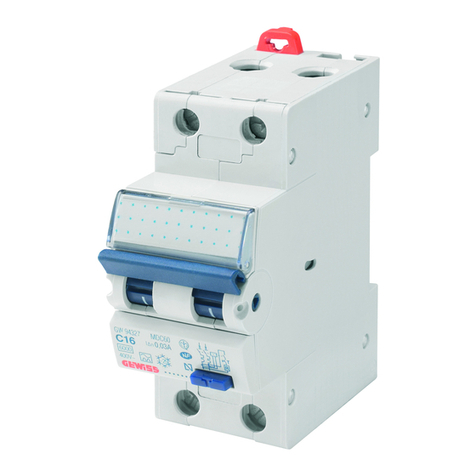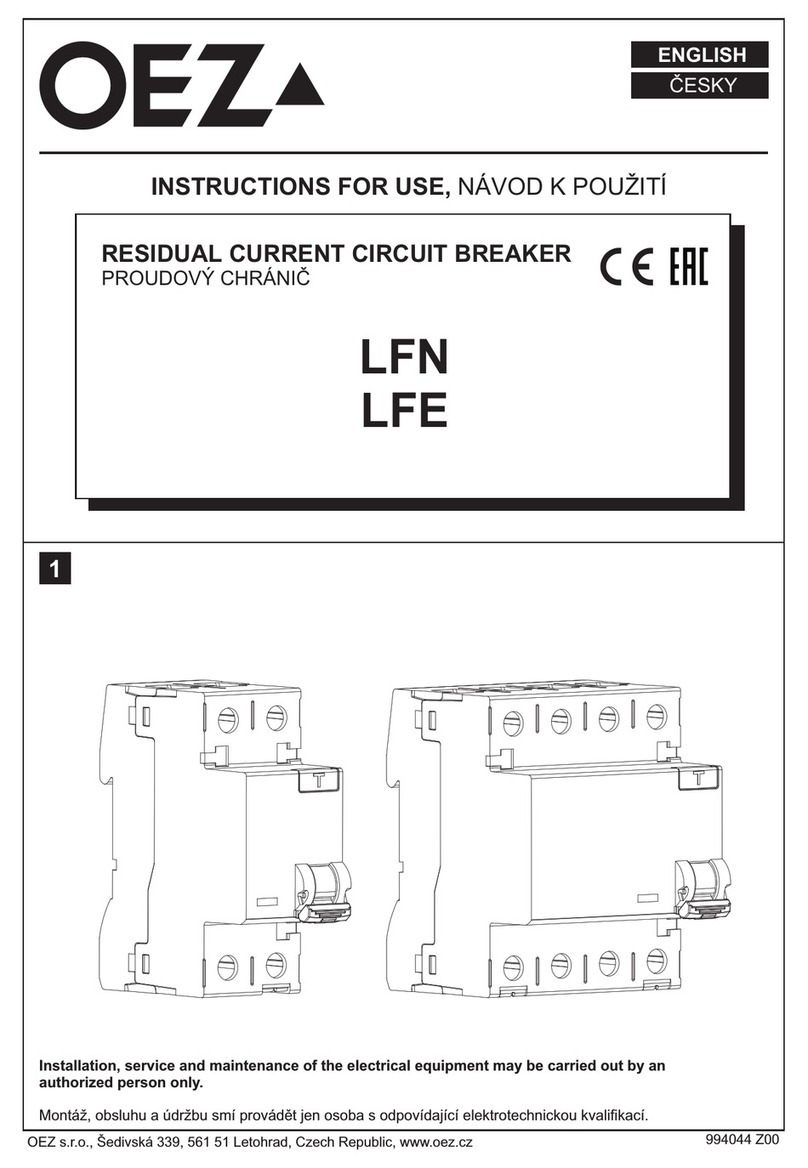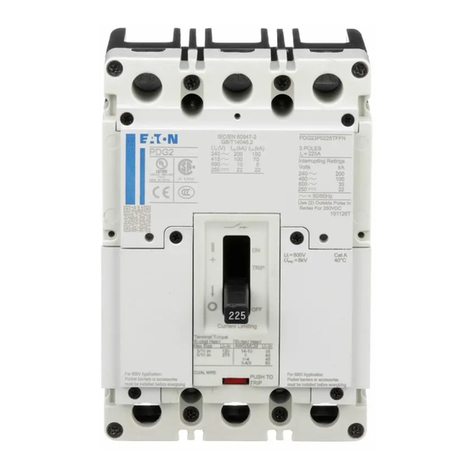4
Features & Characteristics
Drawout Construction
All WavePro breakers are furnished in drawout construction.
They may be used in type WPxxxSUBxxx substructures
or mounted in type AKD-10 low voltage switchgear and
PBII/AV3 ACCESS low voltage switchboards. The OEM
substructure uses many of the same components as the
AKD-10 breaker cubicles and hence share many of the
convenience and safety features inherent in drawout breaker
construction. Drawout construction permits activation of
a new feeder, rapid circuit breaker replacement, and/or
inspection and maintenance of a breaker without the
inconvenience of de-energizing the entire switchgear lineup.
Features (see photos, following page)
1. Interlocks: Standard interlocks include: (A) a drawout
interlock which prevents the breaker from being closed
unless it is in the TEST or CONNECT position, (B) a
contact interlock which prevents moving the drawout
breaker unless the main contacts are open — access to the
drawout mechanism racking screw is prevented when the
breaker is closed, (C, not shown) a spring discharge interlock
that automatically discharges the closing springs when the
breaker is moved from the TEST to the DISCONNECT
position — this prevents withdrawing a breaker from the
cubicle with the closing springs charged.
2. Secondary disconnects: Up to 72 secondary disconnect points
are available on all breakers. Control circuits and accessories
have dedicated points on the disconnects which allows
standardized wiring to the breaker and the ability to add
accessories at a later date without modifying the breaker
or cubicle wiring. Breaker mounted secondary disconnects
engage mating disconnects in the breaker cubicle when
the breaker is in the TEST or CONNECT positions only.
3. Breaker Status Indicators: A breaker contact status indicator
shows the position of the main contacts OPEN or CLOSED.
The status of the closing springs is indicated as CHARGED
or DISCHARGED. The drawout position indicator displays
whether the breaker is in the CONNECT, TEST or DISCON-
NECT position. The breaker also includes a switch that pro-
vides main contact status indication to the POWER
LEADER™ Power Management System.
4. Rejection feature: A built-in rejection feature prevents inser-
tion of a breaker into an incorrect cubicle or substructure.
This prevents either: insertion of a breaker with a lower
interrupting capability (IC) into a high IC cubicle or
substructure, or insertion of a higher ampere rated breaker
into a lower ampere rated cubicle or substructure, or both.
Within a given frame size, a higher IC breaker will be
allowed into a lower IC cubicle or substructure (ex. a
WPX-08 breaker would be able to rack into a WPH-08
or WPS-08 cubicle or substructure). Fused breakers are
rejected from all other cubicles or substructures.
5. Padlocking devices: (A) Supplied on all breakers, the
padlocking device allows up to three padlocks —
1⁄4
” to
3⁄8
”
diameter shank — to be installed to keep the breaker
mechanically trip-free. (B) A drawout padlock provision
on the side of all breakers permits locking the breaker in
either the TEST or DISCONNECT position with up to three
padlocks. (C) Furthermore, the rails in the substructure and
breaker cubicle will accept up to three padlocks to prevent
insertion of a breaker into an empty cubicle.
6. Key Interlock: Optional provisions for a key interlock
are located on the left side of the substructure or cubicle.
Key interlocks are used to supervise the closing of a circuit
breaker or the operation of upstream or downstream devices.
Typical applications include interlocking main and tie break-
ers to prevent paralleling and interlocking secondary main
breakers with primary air switches. Up to two key positions
can be accommodated on each cubicle or substructure.
7. Drawout mechanism: A front accessible racking shaft is used
to move the breaker through the various drawout positions.
The racking shaft is located in the escutcheon on WP-08,
WP-16 and WP-20 breakers. It is located on the right side of
WP-32, WP-40 and WP-50 breakers and is accessed through
a covered opening in the cubicle door.
8. Substructure: The substructure is a self-contained framework
serving as a stationary receptacle for the WavePro drawout
breaker. The substructure is designed for convenient mount-
ing, with holes provided for bolting on a shelf or supports.
Holes are also provided in the primary stabs for bolting to bus
bars or terminal lugs. The substructure has retractable rails
which aid in the installation of the drawout breaker.
9. Wheels and guide bar: Allows the drawout circuit breaker to
ride on the cubicle or substructure’s retractable rails for easy,
precise removal and installation.
10. Shutters: Shutters are available as an optional accessory
to protect personnel from inadvertently touching the primary
stabs of an energized cubicle or substructure when the
drawout breaker unit is removed.
11. Position Switch:
(By-pass switch or TOC truck-operated-con-
tact) This accessory is available with either two NO and two NC
or six NO and six NC electrically separate contacts. The switch
changes state when the breaker is racked from the CONNECT
to the TEST position. The position switch is used to indicate
the drawout position of the breaker, enable/disable control
circuits, and/or bypass auxiliary contacts when the breaker
is in the TEST/DISCONNECT/WITHDRAWN positions.
12. Lifting tool: Lifting tools are provided with each line-up
of drawout switchgear and are available as accessories for
substructures, and should be used to assist in safe handling
of the drawout breaker. The lifting tool for 800-2000A frame
breakers features 3 point lifting for easier installation of fused
and unfused breakers. Separate lifting tools are used for 3200-
4000A breakers and for 5000A breakers.
